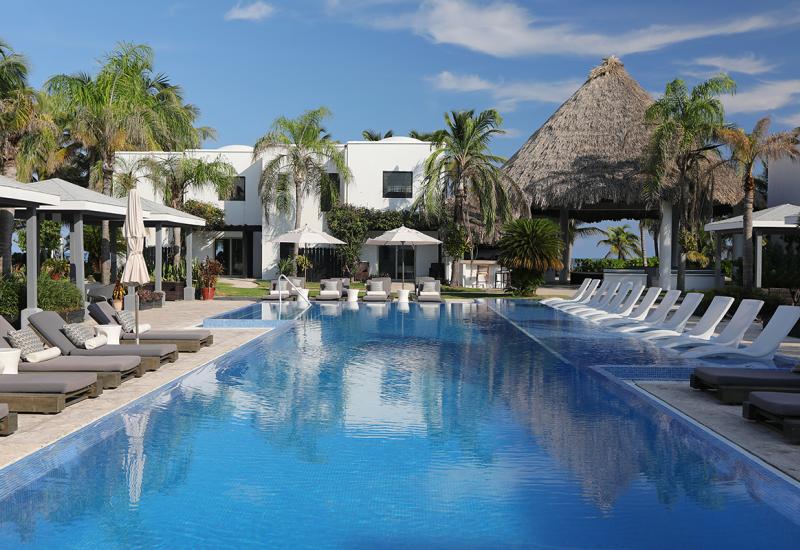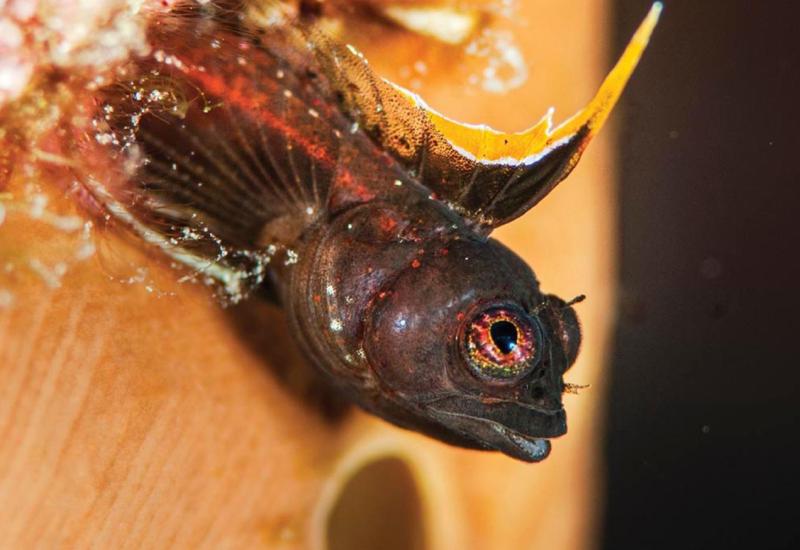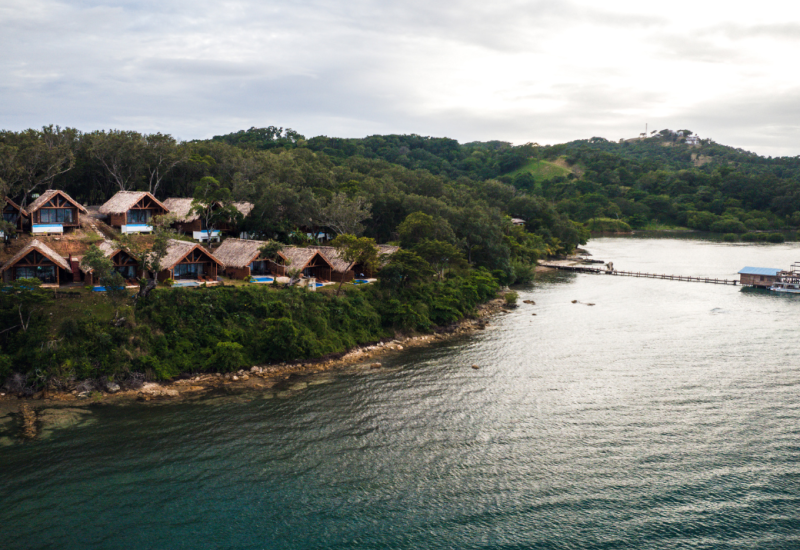Curacao's Mini Splendored Things
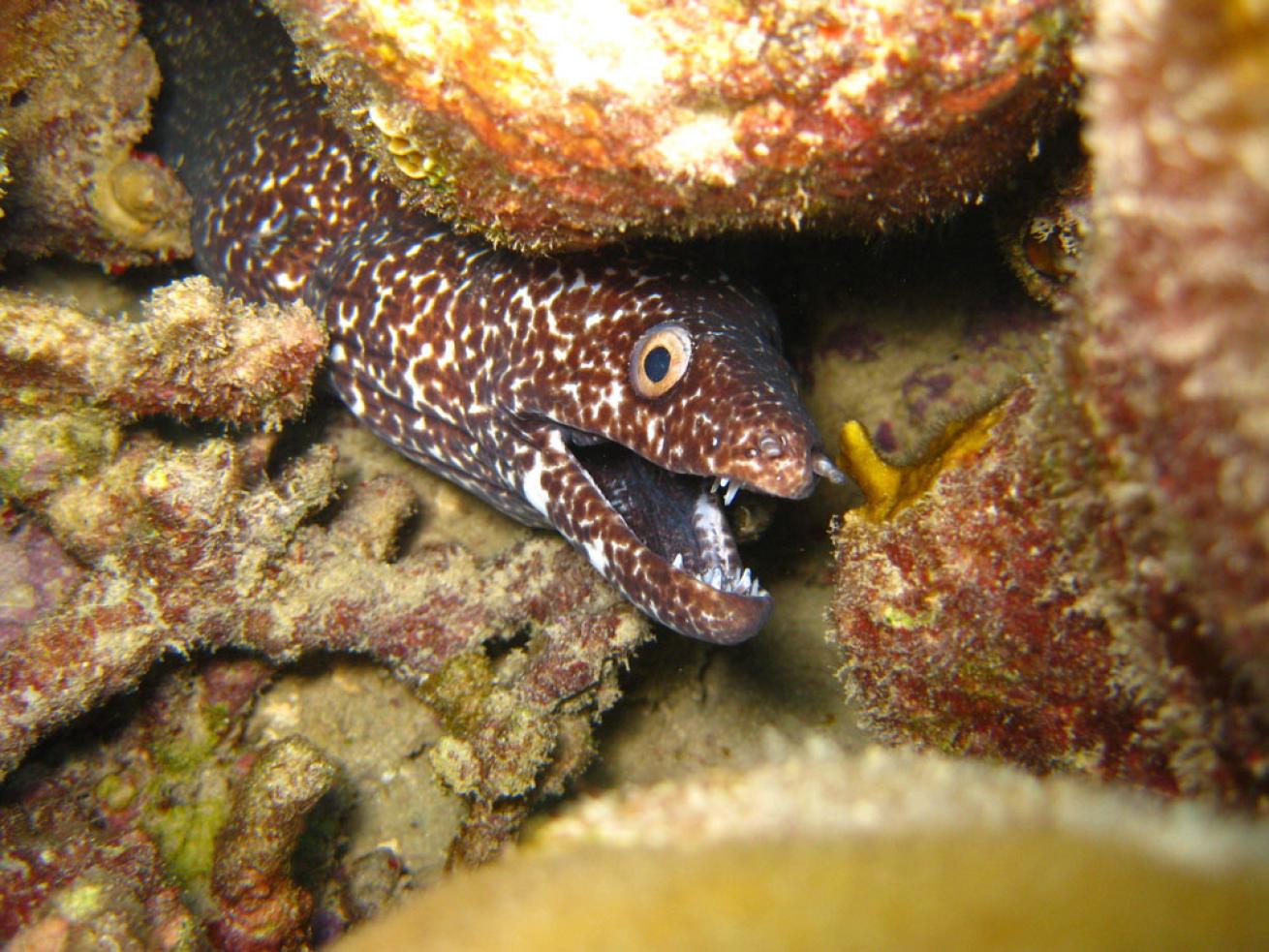
That snarling voice I'm hearing, prattling on inside my head? It's my skeptical inner reporter. And he's reprising a refrain from an old hip-hop classic: "Don't believe the hype!" The voice is fighting to temper my enthusiasm for the dive that awaits us — Watamula — but it's losing ground to my warm, sunny mood, which matches the brilliant skies overhead as our boat speeds along Curaçao's northwest shore. Our destination, or destiny, to hear unabashedly enthusiastic dive guide Lynn Bean tell it, is the island's new crown jewel dive site. She and the crew of Sunset Divers are so protective of the site's untouched mushroom-shaped coral formations that trips here are offered only once a week as a special advanced-divers-only excursion.
"It's completely unspoiled," says Bean, a robust, assertive guide in her early 30s, with a sharp wit and blonde, curly locks. "It's my favorite dive on the island. It's like looking at how pristine other reefs were 20 years ago. I dive there on my birthday, it's so special. You'll love it."
Even as I gear up, the debate inside my head continues, but after the splash of my backroll entry, all doubt is erased and a new sensation takes over — you know the one: a smile and a childlike awe. The density and variety of the corals is overwhelming. So are the myriad colors: Pea-green mountainous star corals; eggplant-purple black ball sponges; burnt orange elephant-ear sponges; yellow sea whips and spiny sea rods; and even rising green pillar corals. I slowly and painstakingly maneuver between and around the lush coral heads, and peer into the crannies, training myself to spy on the macro life that makes Curaçao special — such as a spotted moray eel peeking out of a barrel sponge and cleaner shrimp dancing in the wiry tentacles of a gray corkscrew anemone.
OK, I'm now thinking that maybe you can believe the hype.
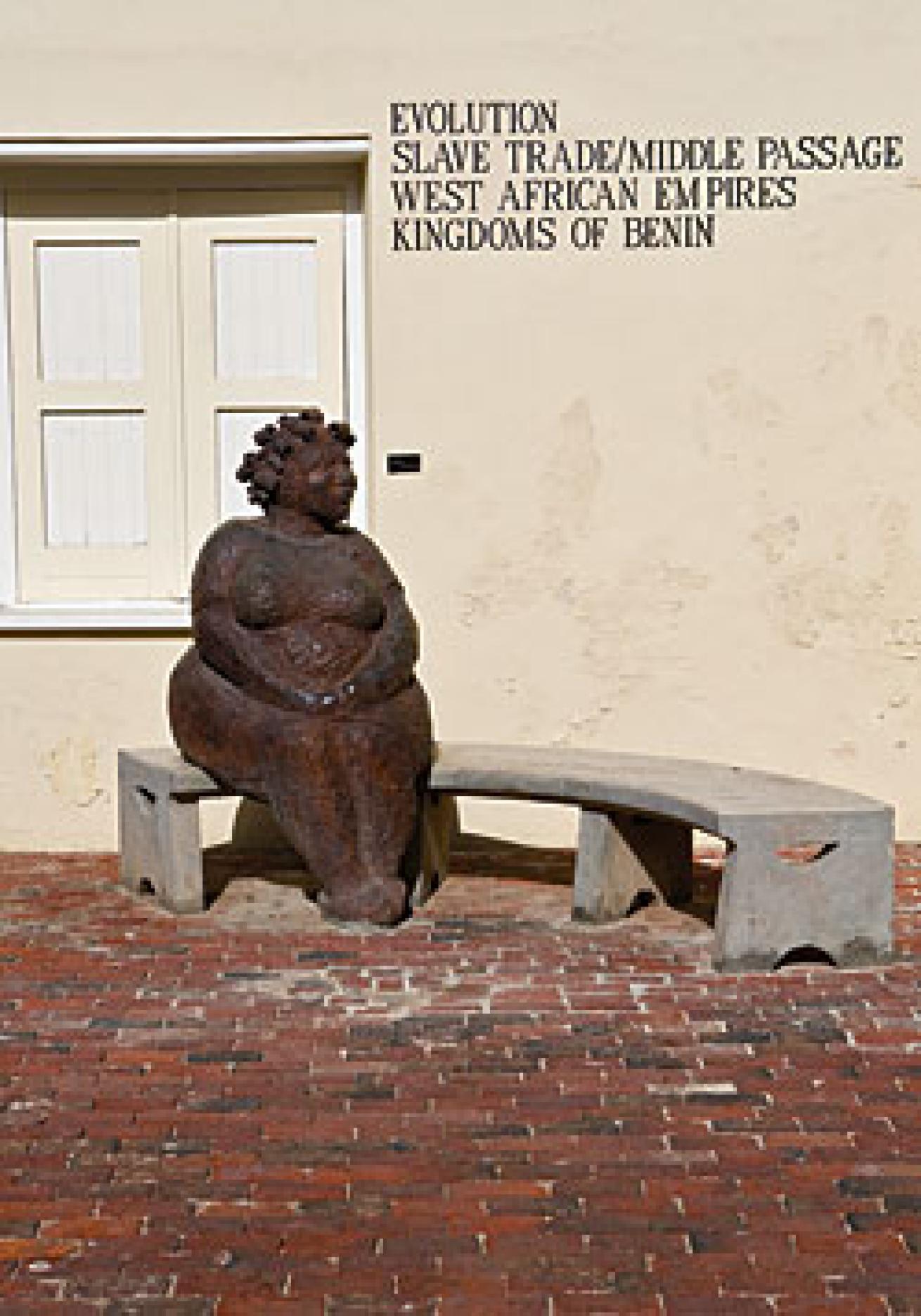
Dirty Little Secrets
Curaçao — once part of the former Netherlands Antilles' "ABC Islands," which also includes Aruba and Bonaire — has an abundance of healthy reefs like Watamula, thanks to ancient geological events. Sometime during the last ice age, a rapid thaw dramatically raised sea levels, helping to create fringing reefs that are often mere footsteps from the island's sandy shores. The number 80 is especially significant here, as it describes the approximate number of Curaçao's named dive sites and also its average water and air temperatures. There's also plentiful shore diving, with sites marked on the road and off resort docks. And whether you dive a rare site like Watamula or an old favorite like the world-famous Mushroom Forest, every dive on Curaçao's reefs is like a treasure hunt, challenging divers to slow down and scout for the small, colorful and intricate marine life that's hidden in nearly every crevice. You'll soon learn to view Curaçao's reefs as its local dive guides do--as a treasure trove of macro life, or as I like to call them, the mini splendored things.
One of Curaçao's richest treasure troves lies in the bottom sands of Porto Mari, aka The Valley, a unique, triple-reef system where some of the island's coolest critters regularly hang out. Our coveted objective this morning is a yellow seahorse that's recently been spotted, without its mate, at a particular coral branch. We've been told the seahorse may be hard to find because it has made itself "dirty" to camouflage itself from predators.
There are a few different ways to dive Porto Mari. The mooring is in 15 to 20 feet of water, and if you're diving from a boat (it can be accessed from the beach), you'll start on the bottom and follow a sand chute out to the first reef. You can spend your time here, or cross the crevice to the second reef and explore either the inner or outer sides of it. Finally, you can cross another sandy area to the third reef, marked by a bouy.
On our first visit to Porto Mari, Bean takes a group of us to the crevice. At the bottom, she scrapes up some sand and makes a hand-sized hole where she sees small domes with small pockmarks. Within seconds, mantis shrimp emerge from the white domes, scurrying in the silt. While looking at a couple of sea fans I notice an old favorite from other Caribbean dives — flamingo tongues, tiny oval-shaped snails with distinctive leopard spots. But when I look around for corkscrew anemones--curly, wiry strands resembling human hair — I discover some of Curaçao's best entertainers, a group of Pederson cleaner shrimp, whose long antennae and purple-spotted bodies give them away. These microscopic animals have formed a symbiotic relationship with these anemones and often establish cleaning stations there where schooling goatfish and blue-striped grunts literally line up to get the insides of their mouths cleaned. But if you're very patient and your buoyancy is right, you can plop down a finger and the shrimp will give you an impromptu manicure. As I put my right index finger on a spot near the anemone, I wait. A shrimp warily approaches, as its frail body dances and its antennae flail from side to side. I listen very closely to its tiny claws tapping on my fingernail, sounding like the clacking of old typewriter keys.
Swimming on to another sandy patch, Bean seems to engage us in a game of charades. She's folding both hands over in front of her and rapidly and repeatedly moving her head forward. At first, I'm stumped. It takes me a while, but then I get it: She's imitating holding reins as if she's on horseback. Seahorse! We slowly swim over to a coral tree where we discover our guest star awaiting us — in all its dirty yellow glory. Its tail is coiled around the end of the tree with its head bobbing up and down. It doesn't shy away from a photographer's big lenses and strobes, or my curious gaze. I'm left wondering, as we move on, if the seahorse is awaiting its mate.
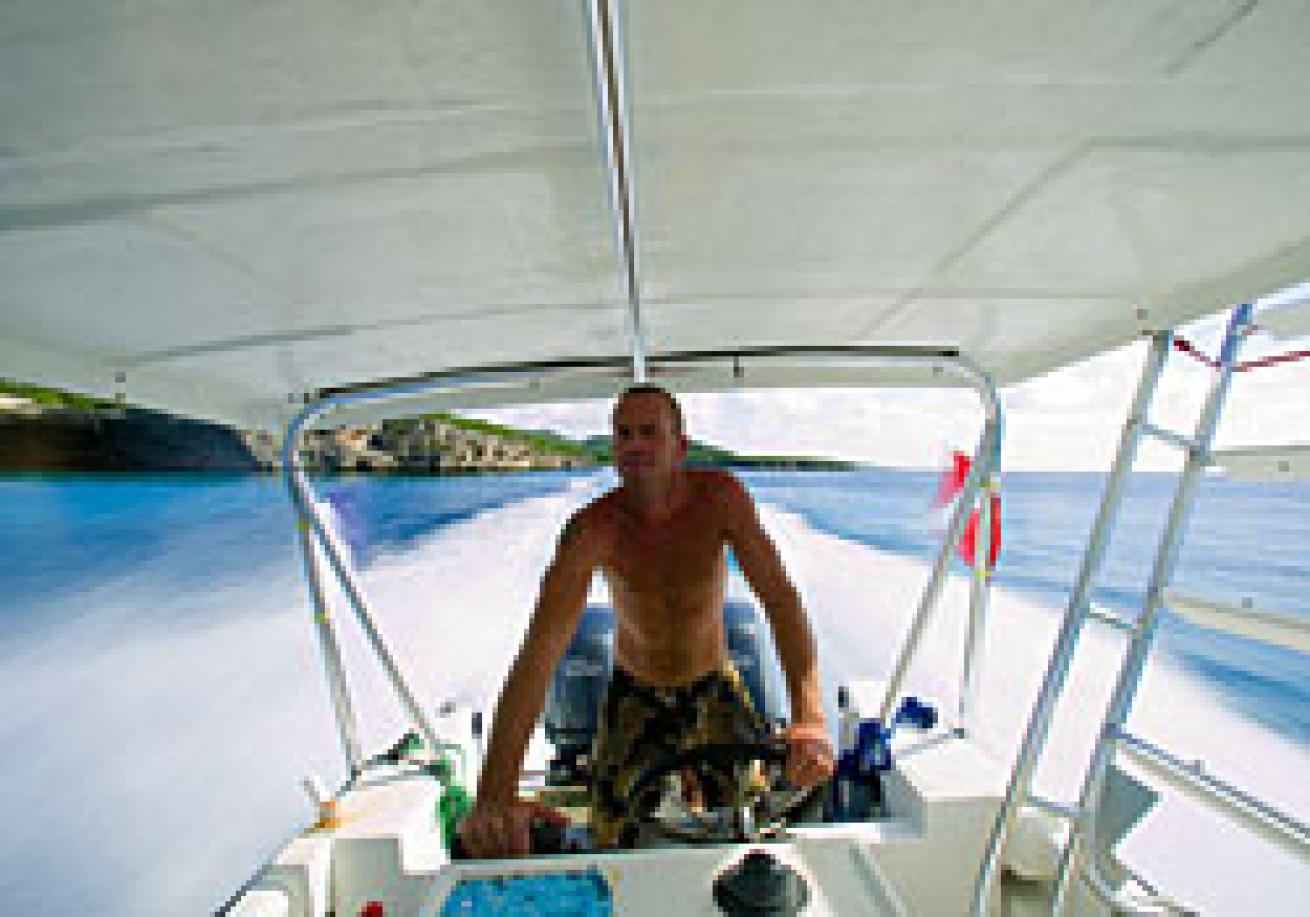
Into the Blue
The words "surface interval" and "thrilling" aren't often written in the same sentence, but snorkeling in Curaçao's Blue Room Cave, off the island's west coast, is hardly your typical surface interval. This fossilized cave, cut by water into the shoreline's limestone cliffs, is located near Mushroom Forest on the west end of the island. Snorkeling into the cave's narrow, arched entrance feels claustrophobic at first, but inside the rock is a cavernous dome half filled with still, clear water. The intensity of the mid-morning sunlight filtering in through the cave opening changes the water's hue, first to turquoise, then to aqua. It's as if we're swimming in a pool of mouthwash.
Later that night, a journey into Willemstad, Curaçao's capital, provides another unexpected surprise. En route to a dance club on the island's southern end, a wrong turn lands us in Otrabanda, a major commercial and cultural area near the cruise ship terminal and casinos. We put on the brakes when we see a small, colorfully costumed army of drummers and dancers sashaying back and forth like the coral whips we've been seeing in the reefs. Within moments, we're blocking traffic as we get out and watch the parade, heralding the start of pre-Carnival festivities. While we've got the parade on one side of us, we have a prime vantage point, across a bridge, of Punda, the shopper's paradise, marked by its ubiquitous, triangular-framed Dutch colonial buildings painted in pastel yellows, reds and blues. As if on cue when the parade ends, we're jolted again by the booming sounds of fireworks blasting away on Punda's foreshore, illuminating the sky in bright bursts of color.
Team Work
Back underneath the surface the next morning, there are more colorful explosions awaiting us.
Now that I'm attuned to Curaçao's reefs and having trained myself to look at both the coral formations and the macro life, I'm now pointing out wildlife to dive guides as much as they're showing me. At Witch's Kitchen, though, without a shaker, I can only futilely mumble through my regulator, then swim over to show dive leader Mark Brown the massive spotted eagle ray, swimming only 15 feet from us. He nods toward me in appreciation, then frantically bangs a carabiner against the bottom of his tank, setting off a chase of photographers in pursuit.
At Pelican Beach and Radio City, Andhiela Buso — a Brazilian-born dive guide with Easy Divers — and I learn we form quite the formidable fish ID tag-team. She spots a squid over a formation of staghorn coral, radiating an iridescent purple and silver as it swims; then moments later I'm showing her a peppermint cleaner shrimp peeking out of a purple tube sponge. She smiles and applauds proudly. At Radio City, she spies a cadre of flamingo tongues camped on a sea fan. Later, I show her the smallest green moray eel I've ever seen — the size of a finger — peering its head out of the bottom of another coral head, near a forest of pine-like black coral.
Back on the boat again, admiring Curaçao's west coast under cerulean skies, I've got a new song on my mind. It's a cheesy old rock power ballad, and the voice singing it sounds a lot like my eternally optimistic inner diver. He's belting out another familiar refrain, gleefully chiming with an optimistic, revised take on hype: "Don't stop ... believin.'"
Curaçao Dive Site Sampler
Classic Boat Dives
Superior Producer Curaçao's biggest and best wreck is located outside Willemstad's bustling harbor, where boat traffic and currents make this an intermediate to advanced dive. Upright in 50 to 110 feet of water, she sports a furry coat of orange cup corals. Expect grouper and barracuda, and silversides inside the wheelhouse.
Mushroom Forest This picturesque reef off the island's west end takes its name from the abundance of mountainous star corals piled high like a field of giant shiitakes. The fun starts in just 40 to 60 feet of water off the island's northwest shore, and you can expect plenty of reef fish to boot.
Klein Curaçao Accessible during day trips to the island's far eastern end, the uninhabited island of Klein (Little) Curaçao features a wall undercut with grottoes in 120 to 170 feet of water. Expect to see snappers, turtles and the whole gamut of tropicals.
Harry's Hole With lots to see in relatively shallow depths--peacock flounders, spotted drums, sharptail and gold-spotted eels to name just a few — this is a great second-tank dive off Curaçao's west end. Don't forget to look for seahorses near the mooring.
Saba Wreck and Reef Bring a camera when you dive this photogenic little wreck, which still sits upright and intact at 30 feet. From the boat, it's a short swim to the sloping drop-off, which angles into the deep at a 45-degree angle and is home to dense hard corals and colorful sea whips.
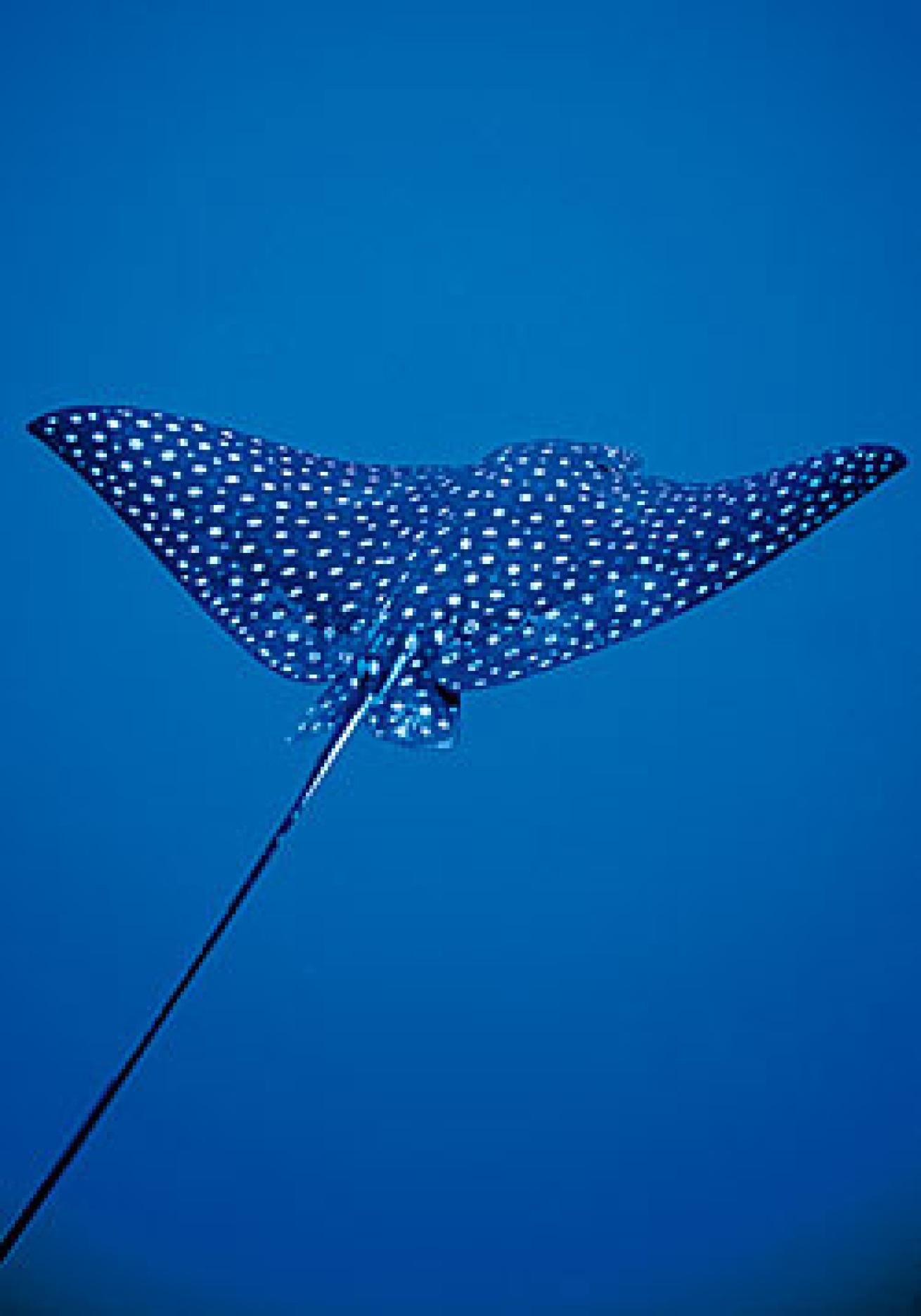
Top 5 Shore Dives
Do-it-yourself divers looking to explore the island on their own schedule — not the dive boat's — will enjoy the fact that there are about two dozen dedicated shore dive sites on Curaçao's eastern and western shores, each highlighted by well-marked road signs. Local dive pros recommend these favorites.
Playa Kalki (Alice in Wonderland) From the parking lot, follow the stairs down to the beach. It's a brief swim to the blue buoys on the reef's edge. The reef starts at about 40 feet and slopes to about 70. The site is known for loads of colorful reef fish and lots of moray eels. Ocean Encounters West (www.oceanencounters.com/oewest.html) runs a dive shop here and offers tanks for rent and a guided shore dive for $30.
Nos Cas Its name is Papiamento for "our house," and all you have to do is wade in and follow the guideline, which drops down to about 90 feet. In about half that depth, it's possible to see spotted drums, parrotfish, moray eels, squid, octopus and mantis shrimp. It's an easy dive and one that can also be done with a guide and as a night dive, plus it's ideal for new divers and new dive photographers.
Cas Abao A lovely, sprawling white sand beach awaits divers, snorkelers and families — just pay the parking gate attendant a fee of about $6, and you're in. From the sandy shore, it's a five to 10-minute swim out to a wall dive with a maximum depth of about 100 feet. The site features hard corals, spotted morays, lots of cleaner shrimp and the occasional seahorse. Rent gear from a dive shop on the beach to explore the site on your own, or book a two-tank trip with the Dive Bus (www.the-dive-bus.com).
Playa Lagun This popular beach is often crowded on weekends, so schedule your visit for a weekday to avoid the crowds. It's a fairly long surface swim to reach the reef, which is situated in a keyhole-shaped cut of coastline and starts in about 45 feet of water. There are a couple of nearby caves, and it's not unusual to spot turtles, eagle rays, dolphins and lobsters. Discover Divers maintains a dive shop here.
Playa Jeremi Bring your own tanks and don't forget to lock your car doors at this remote beach site. Follow the well-worn dirt path to the shore, but watch your step — the drop-off from the entry is dramatic. The sloping reef running parallel to shore has a maximum depth of about 100 feet and is a good place to see moray eels, turtles and angelfish.
Topside Highlight
**Museum Kura Hulanda
Exploring Curaçao's complex human history **
The harrowing trans-Atlantic slave trade once thrived in Curaçao and left an indelible mark on the island. The Museum Kura Hulanda in Willemstad — found inside a resort complex of about 70 restored colonial-era buildings in the Otrabanda district and a short walk from both the cruise ship terminal and the shopping haven of Punda — lets visitors travel backward through time and witness Caribbean history's heartbreaks and highlights. "Black Holocaust," the showcase exhibit, chronicles the slave trade and even features a replica of a ship's cargo hold where captured Africans spent weeks in impossibly cramped confinement on their way to a life of forced servitude. In adjoining exhibits, the museum celebrates the journey to freedom in the Americas, and another honors the civilizations of the slaves' forebears. Other noteworthy wings include "Lands of Abraham," chronicling Curaçao's Jewish community; "Pre-Columbian Gold," featuring historical displays of Carib Indians; and "Evolution," devoted to the scientific work of Dr. Charles Darwin. The museum is open daily from 10 a.m. to 5 p.m. Admission is $9. For more information, visit www.kurahulanda.com.
In Depth
Getting There & Around: Nonstop flights to Curaçao (CUR) originate in Miami (MIA), Newark (EWR) and Toronto (YYZ). Renting a car or truck is a must to take full advantage of the shore diving on Curaçao. A valid driver's license is required.
Water Conditions: Average water temp is 80 degrees, with fluctuations between 78 and 82 degrees.
Weather: Summer temps average 85 degrees and drop to the mid-70s in winter.
Entry Documents: U.S. citizens need a passport, plus a return or ongoing ticket.
Language: Dutch is the official language, but locals also speak English and Papiamento.
Time: Atlantic Standard, one hour later than Eastern Standard. Curaçao does not observe daylight saving time.
Electricity: 127 volts, 50 cycles. Converters are available should you need them. Most resorts have 110-volt, 60-cycle plugs in guest rooms.
Local Area Code: 011-5999.
Just In Case: There is a recompression chamber in Willemstad at St. Elisabeth Hospital. It is staffed 24 hours a day.
Tourism: Curaçao Tourist Board
For More Information: Get detailed information on Curaçao, including comprehensive travel guides, special dive deals and recent trip reports submitted by users at www.scubadiving.com/travel/caribbeanatlantic/curacao.

